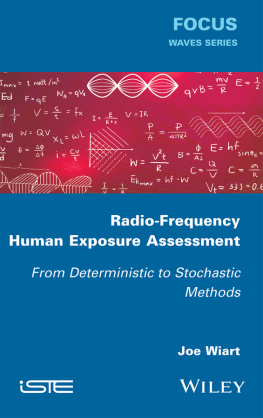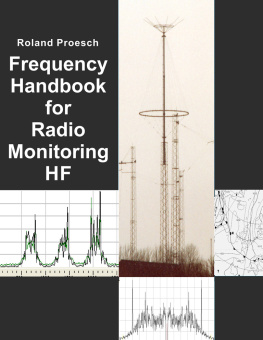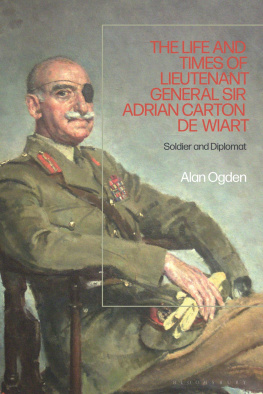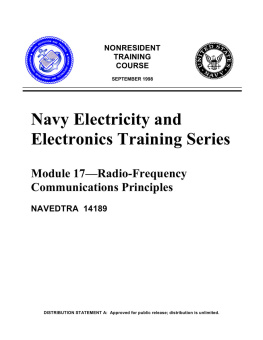Wiart - Radio-Frequency Human Exposure Assessment
Here you can read online Wiart - Radio-Frequency Human Exposure Assessment full text of the book (entire story) in english for free. Download pdf and epub, get meaning, cover and reviews about this ebook. year: 2016, publisher: John Wiley & Sons, Incorporated, genre: Science fiction. Description of the work, (preface) as well as reviews are available. Best literature library LitArk.com created for fans of good reading and offers a wide selection of genres:
Romance novel
Science fiction
Adventure
Detective
Science
History
Home and family
Prose
Art
Politics
Computer
Non-fiction
Religion
Business
Children
Humor
Choose a favorite category and find really read worthwhile books. Enjoy immersion in the world of imagination, feel the emotions of the characters or learn something new for yourself, make an fascinating discovery.
- Book:Radio-Frequency Human Exposure Assessment
- Author:
- Publisher:John Wiley & Sons, Incorporated
- Genre:
- Year:2016
- Rating:5 / 5
- Favourites:Add to favourites
- Your mark:
- 100
- 1
- 2
- 3
- 4
- 5
Radio-Frequency Human Exposure Assessment: summary, description and annotation
We offer to read an annotation, description, summary or preface (depends on what the author of the book "Radio-Frequency Human Exposure Assessment" wrote himself). If you haven't found the necessary information about the book — write in the comments, we will try to find it.
Wiart: author's other books
Who wrote Radio-Frequency Human Exposure Assessment? Find out the surname, the name of the author of the book and a list of all author's works by series.
Radio-Frequency Human Exposure Assessment — read online for free the complete book (whole text) full work
Below is the text of the book, divided by pages. System saving the place of the last page read, allows you to conveniently read the book "Radio-Frequency Human Exposure Assessment" online for free, without having to search again every time where you left off. Put a bookmark, and you can go to the page where you finished reading at any time.
Font size:
Interval:
Bookmark:

To Corinne, Romain and Thibaut
FOCUS SERIES
Series Editor Pierre-Nol Favennec
Joe Wiart

First published 2016 in Great Britain and the United States by ISTE Ltd and John Wiley & Sons, Inc.
Apart from any fair dealing for the purposes of research or private study, or criticism or review, as permitted under the Copyright, Designs and Patents Act 1988, this publication may only be reproduced, stored or transmitted, in any form or by any means, with the prior permission in writing of the publishers, or in the case of reprographic reproduction in accordance with the terms and licenses issued by the CLA. Enquiries concerning reproduction outside these terms should be sent to the publishers at the undermentioned address:
ISTE Ltd
27-37 St Georges Road
London SW19 4EU
UK
www.iste.co.uk
John Wiley & Sons, Inc.
111 River Street
Hoboken, NJ 07030
USA
www.wiley.com
ISTE Ltd 2016
The rights of Joe Wiart to be identified as the author of this work have been asserted by him in accordance with the Copyright, Designs and Patents Act 1988.
Library of Congress Control Number: 2016930390
British Library Cataloguing-in-Publication Data
A CIP record for this book is available from the British Library
ISBN 978-1-84821-856-7
- 1 Human RF Exposure and Communication Systems
- 3 Stochastic Dosimetry
- 1 Human RF Exposure and Communication Systems
- 2 Computational Electromagnetics Applied to Human Exposure Assessment
- 3 Stochastic Dosimetry
Out of clutter, find simplicity. From discord, find harmony. In the middle of difficulty lies opportunity.
Albert EINSTEIN
Approximately 6 billion humans are nowadays using a mobile phone. Depending on the country, these wireless phones are known as handy, cellular, mobile, smartphone, etc. Like electricity, the car and television, they have changed our way of life. Nowadays, they play an important role in our daily life.
Before the 1990s, mobiles phones were, for the most part, bulky and only used by a small number of people. The 1990s saw an increasing and tremendous use of wireless systems and the democratization of this means of communication.
The use of electromagnetic waves for wireless communication is not new: Marconi patented the first wireless communication system in 1897. For a long time, firefighters, hospitals and police used radio waves to communicate but it took until the 1980s to lay down the foundations of the current wireless telephone networks that today allow hundreds of millions of people to make calls, download information, surf the Internet, etc.
To enable communication between millions of phones, computers and, more recently, tablets, millions of access points, i.e. base station antennas, have been deployed globally (tens of thousand in France). Small cell technology and the Internet of Things, with billions of connected objects, will reinforce this trend.
Despite (or because) of this proximity, electromagnetic radiation emitted by the antennas raises many questions and concerns about the possible health effects of these devices. These radiofrequency waves emit non-ionizing radiation. These waves are not mutagenic, but if the energy carried is too high, they are capable of inducing adverse health effects. To protect people from these possible effects, standards have been established. The World Health Organization (WHO) recommended that biological, biomedical and epidemiological studies be conducted to verify that no health effects are caused below the exposure levels inducing thermal effects. These compliance checks and biomedical research require a quantification of human exposure. This is the purpose of dosimetry.
Dosimetry is a relatively new domain in electromagnetism. It is fundamental for assessing the specific absorption rate (SAR) and the strength of electric and magnetic fields in view of exposure quantification and compliance tests. This book introduces the experimental, numerical and statistical methods and models that have been developed between 1995 and 2015 to improve the assessment of human radiofrequency exposure.
In 2009, I cofounded with Isabelle Bloch, from Telecom ParisTech, and Christian Person, from Telecom Bretagne, the WHIST Lab that is the common lab of Orange and the Institut Mines Telecom. Since 2015, I am in charge of the Chair Caractrisation, Modlisation et Matrise of the RF exposure at Telecom ParisTech.
This book is based not only on the works performed in these structures but also on my lectures at UPMC (University Pierre & Marie Curie), UPEM (University Paris EST Marne la valle), Telecom Bretagne and Telecom ParisTech. It takes into account the research carried out with colleagues (Christian, Man Fai, Azedine, Hamid, Emmanuelle, Nadege, Isabelle, Christian, Zwi) and students (Stephane, David, Stephanie, Naila, Jessica, Zaher, Tongning, Aimad, Amal, Majorie, Anis, Yuanyuan, Pierric, etc.). It also takes advantage of works carried out in various international collaborative research projects funded by RNRT, ANR, ANSES and FP7 between 1995 and 2015. This book consists of three chapters. The first deals with human RF exposure and wireless communication system; the second discusses computational electromagnetic applied to human exposure assessment. The third introduces a very new domain stochastic dosimetry. This conclusion describes the recent works performed to develop and adapt statistical methods to numerical exposure assessment.
Joe WIART
January 2016
Human RF Exposure and Communication Systems
Something is not just because it is law. But it must be law because it is just.
MONTESQUIEU
Over the past 30 years, wireless communication systems have been increasingly used in our daily lives (see ). The versatile use of new smart mobile phones and tablets, the development of home wireless LANs as well as the emergence of pervasive wireless communication systems, such as machine-to-machine, are strengthening this tendency. At the end of 2013, the mobile broadband subscription was 2 billion, which is expected to reach 8 billion by 2019 (3G technology at 4.8 billion and 4G at 2.6 billion). By 2018, the global mobile data traffic will increase nearly 11-fold. Twenty-six billion communication devices will be on the Internet of Things by 2020, with a large proportion of these being wireless.

Despite the increasing use of wireless communications, public concerns about the possible health impacts of exposure to the radiofrequency (RF) electromagnetic field (EMF) have appeared, even if no risk has been proven to date.
In this context, the monitoring and management of EMF exposure has become a key question. Based on scientific knowledge, international organizations, such as the International Commission on Non-Ionizing Radio Protection (ICNIRP) and the Institute of Electrical and Electronics Engineers (IEEE), have established limits to protect the public against known health effects associated with EMF exposure [ICN 98, IEE 05].
Next pageFont size:
Interval:
Bookmark:
Similar books «Radio-Frequency Human Exposure Assessment»
Look at similar books to Radio-Frequency Human Exposure Assessment. We have selected literature similar in name and meaning in the hope of providing readers with more options to find new, interesting, not yet read works.
Discussion, reviews of the book Radio-Frequency Human Exposure Assessment and just readers' own opinions. Leave your comments, write what you think about the work, its meaning or the main characters. Specify what exactly you liked and what you didn't like, and why you think so.








